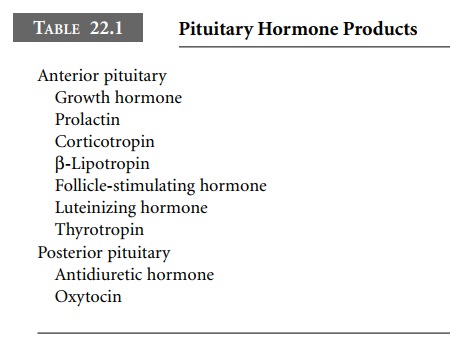Chapter: Clinical Cases in Anesthesia : Transsphenoidal Hypophysectomy
What is acromegaly?
What is
acromegaly?
The pituitary gland is anatomically and
functionally separated into the anterior pituitary (adenohypophysis) and posterior pituitary (neurohypophysis).
Table 22.1 lists the hormones found in the pituitary gland.

Acromegaly is a rare disease caused by growth
hormone (GH)-secreting tumors of the pituitary. In children, GH-secreting
tumors cause gigantism, whereas acromegaly occurs in adults whose epiphyses
have fused. Acromegaly is most common in patients 20–60 years of age, with
equal distribution between the sexes. Diagnosis generally occurs 10–15 years
after the onset of pathologic growth hormone (GH) secretion. There is a twofold
to fourfold increase in mortality versus the general population. If untreated,
50% of acromegalic patients die before the age of 50 years. The most common
cause of death is cardiac and may be the result of hypertension, coronary
artery disease, compensatory hypertrophy as a result of gen-eralized somatomegaly
or the direct effects of GH on the heart.
Acromegaly results from excess secretion of GH
and subsequent elevation of circulating and locally produced insulin-like
growth factor I (IGF-I). GH and IGF-I levels are controlled via several
interactions rather than stimulat-ing growth directly. GH induces the release
of IGF-I, which promotes DNA, RNA, and protein synthesis, as well as cell and
tissue growth.
Related Topics